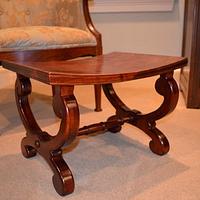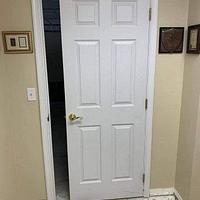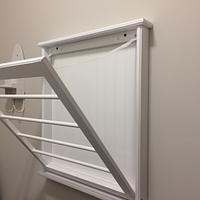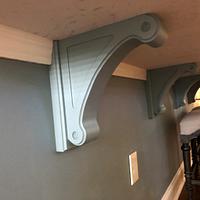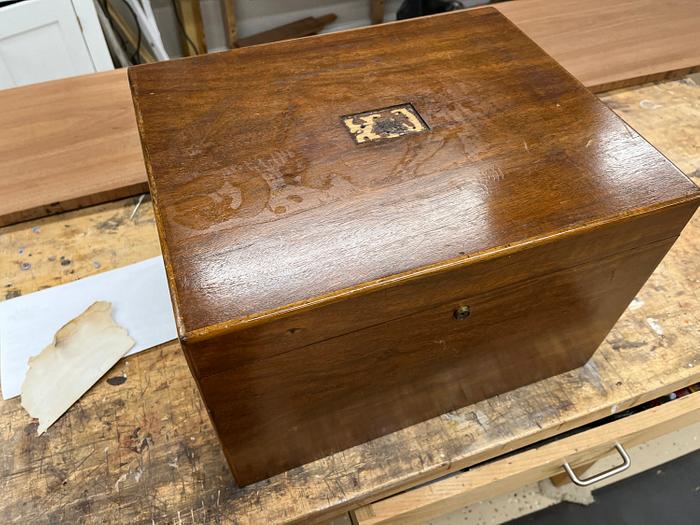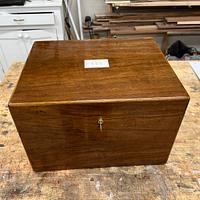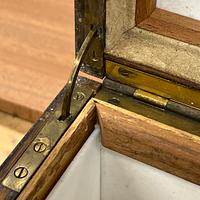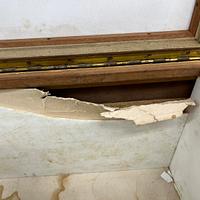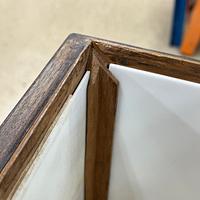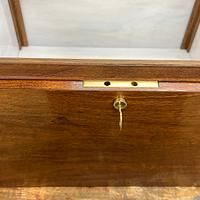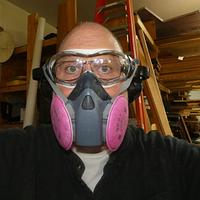Share your craft projects
Make new craft buddies
Ask craft questions
Blog your craft journey

Carey Mitchell
168 posts
and
11 followers
in over 2 years
in over 2 years
More from Carey Mitchell
Restoration of Antique Humidor
I was asked by an attorney friend to restore an antique mahogany humidor which came from the estate of Robert W. Woodruff, longtime CEO of Coca-Cola and prolific philanthropist. Woodruff's philanthropy is legend in the Atlanta area; his name is everywhere at Emory University and EU Hospital, despite the fact that he was kicked out before the end of his first semester as "unsuitable for college." Perhaps it is because he gave billions in Coca Cola stock to the university. Currently, the university describes his tenure as "departed before graduation" !!! The humidor is intended to go in the boardroom at the headquarters of Coca-Cola Enterprises.
The piece consists of mahogany veneer over what appears to be a core of traditional the Spanish cedar. The corner joints are splined and the outside corners are protected by small vertical quarter-round moldings.
Most unusually, the interior was lined with panels of white glass, rather than the Spanish cedar customarily used to line humidors. The panels are secured by complex corner moldings of Spanish cedar, and the upper edges of the glass are protected by double moldings that not only cap the glass edges, but mesh with similar moldings in the lid, which are covered by thin suede leather, providing an airtight seal.
The lid features a recess for a monogram plate, which was missing. The lid is secured by a brass piano hinge, with additional quadrant hinges to hold it open at 110 degrees. A brass half-mortise lock secures the lid, the key was missing.
Most unusually, the interior was lined with panels of white glass, rather than the Spanish cedar customarily used to line humidors. The panels are secured by complex corner moldings of Spanish cedar, and the upper edges of the glass are protected by double moldings that not only cap the glass edges, but mesh with similar moldings in the lid, which are covered by thin suede leather, providing an airtight seal.
The lid features a recess for a monogram plate, which was missing. The lid is secured by a brass piano hinge, with additional quadrant hinges to hold it open at 110 degrees. A brass half-mortise lock secures the lid, the key was missing.
I found a date on the molding holding the glass panel in the top – 1928.
Considering the provenance of the piece, it was decided to replicate the missing monogram plate with one of sterling silver, professionally engraved by hand rather than by jewelry store machines. Coincidentally, the font my friend chose turned out to be identical to that on a small jewelry box also listed in the estate auction papers.
The humidor was in poor condition, with most of the glass panels broken, some moldings broken and some missing. The finish was determined to be shellac, and was in poor condition, with much embedded soil. The brass hardware was badly corroded. The suede leather seal around the inner moldings on the lid was badly soiled by oily deposits from hands.
Locating white glass in 1/16” thickness proved to be impossible. The only source that turned up was in China, with a minimum order of 2 square meters at about $500, plus $300 shipping. I finally found a shop that makes custom doors with leaded glass; they had 1/8” thick white glass, which is slightly mottled and does not exactly match the color of the remaining pieces of original glass. It was decided to keep the original glass panel in the lid, and replace all 5 pieces in the lower box (only 2 were intact). The lid is sufficiently distant that the difference is not glaringly apparent.
The thicker glass necessitated modification of the retaining moldings to accommodate the extra thickness; enter my antique #78 and Sargent #35 skew planes.
New moldings were fabricated of Spanish cedar to replace the 6 that were damaged or missing. Producing and fitting the complex shapes was a challenge that required 5 tries on one piece.
Making the color of the new Spanish cedar moldings match that of the existing was an exercise in mixing dyes.
The suede leather that seals the top against moisture loss was badly stained from handling. It responded to cleaning with lacquer thinner, well, mostly.
A locksmith was able to make a key to fit the lock. While his key worked nicely, it was made from thin plated steel and the appearance was really poor, scratched and abraded, unacceptably unsightly. I clamped it against a piece of sheet brass and traced the shape carefully onto the brass. Then I used an antique jeweler’s saw to cut out the shape and rough out the teeth. Then, jeweler’s files were used to shape the working teeth. It works perfectly and looks much better.
The inside of the case had the moldy odor common to antiques. I sprayed the interior with 50% hydrogen peroxide (very carefully). This eliminated the odor. Keep this trick in mind when restoring old furniture.
The finish was removed and the case cleaned. After a light sanding with 400 grit, 5 coats of gloss varnish were applied. After wet sanding to 800 grit and buffing, it proved to be unsatisfactory and was removed. A second application of 5 coats, wet sanded with 800 grit between coats also proved unsatisfactory and was removed. The 3rd application of 5 coats, wet sanded to 800, 1000 and 1500 grits, proved satisfactory. It was then polished with Meguair’s automotive polishing compound to a soft gloss. This was followed by finishing wax and buffing.
All the brass hardware was cleaned, polished and coated with lacquer.
Overall, the box appears to be in its original condition. It was a challenge, but an interesting one.
Carey Mitchell
7 Comments
carey your work always impresses me, but this blows me away with the work and detail to revive this poor quality humidor back the a rich artifact it once was. and the fact that it will join the collection at Coca Cola is something to take great pride in. i think your gonna blow em away with this one. incredible craftsmanship my friend.
working with my hands is a joy,it gives me a sense of fulfillment,somthing so many seek and so few find.-SAM MALOOF.
Gorgeous refurb. Truly professional results.
Ryan/// ~sigh~ I blew up another bowl. Moke told me "I made the inside bigger than the outside".
Carey,
Great job. I do hope you left a message, name, date or something for a future woodworker to find when it is restored again.
Great job. I do hope you left a message, name, date or something for a future woodworker to find when it is restored again.
Petey
Agree with all the above, excellent work on an interesting piece of history.
Ron
Petey, I did ink my name and "Restored 2024" om the bottom.
Carey Mitchell
Nice job Carey, went from tattered and torn, to like new.
That interior is definitely not "humidor like" with it's glassed compartment. I wonder if tobacco was what he stored in it?
That interior is definitely not "humidor like" with it's glassed compartment. I wonder if tobacco was what he stored in it?
Some fine labor of love there! The original grunge looks nasty, had to be one of the worst defects to correct.
Interior is an odd configuration with the glass, but certainly has appeal with the lightness of the interior versus dark wood.
Interior is an odd configuration with the glass, but certainly has appeal with the lightness of the interior versus dark wood.









